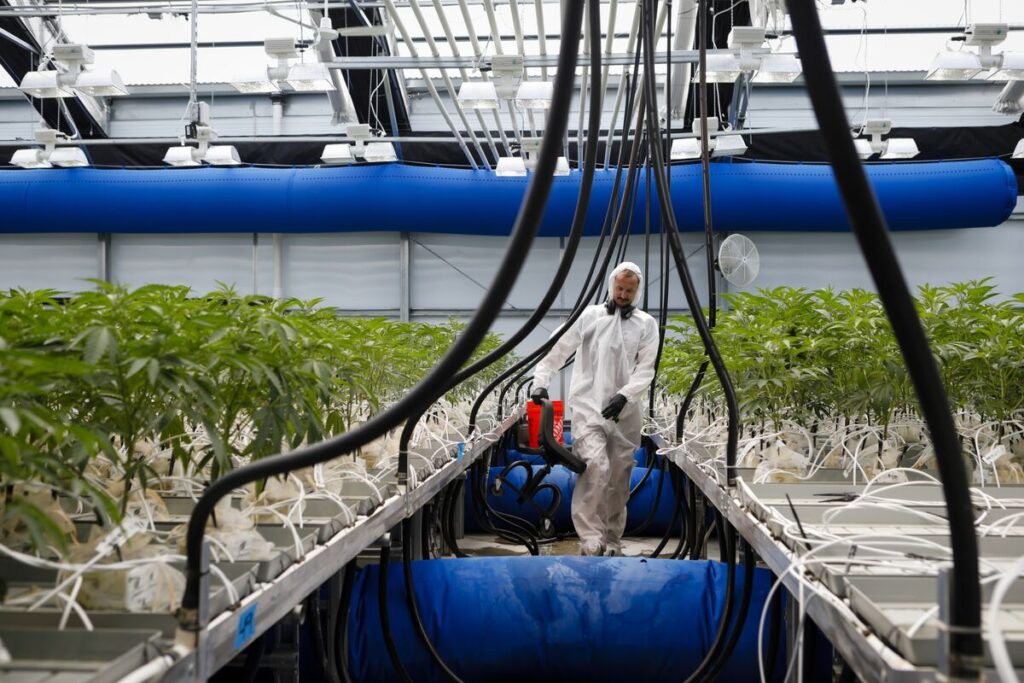Mastering the Art of Hydrating Your Cannabis Plants
Hydrating your cannabis plants appropriately is paramount to their health and productivity. The aim of this comprehensive guide is to enlighten you on the best practices, considerations, and methods of watering your cannabis plants to yield the best results. Be aware that providing the right amount of water is not as simple as it may seem, as there are numerous factors to consider.
Temperature and Watering Frequency
Temperature plays a vital role in determining how frequently your cannabis plants need water. As temperatures rise, plants drink more water, and the risk of nutrient toxicity may increase as plants absorb nutrients at a faster pace. Therefore, with higher temperatures, you might need to water your cannabis plants more frequently, while also being cautious about nutrient toxicity.
Humidity’s Impact on Water Uptake
The humidity level in your grow space directly influences water uptake in your cannabis plants. In a drier environment, there is less water in the air, leading to increased evaporation from the leaves. As a result, the plants will draw up more water from the soil, necessitating more frequent watering.
Soil Composition: Balancing Moisture and Aeration
The composition of your growing medium significantly affects your watering schedule. Materials like perlite, sand, or coco coir contribute to enhanced aeration, reducing the risk of overwatering. However, these materials also mean you’ll need to water more frequently. Conversely, peat and vermiculite retain water longer, meaning less frequent watering is required.
Cultivation Method and Water Requirements
Your choice of cultivation method can significantly impact the water needs of your cannabis plants. For instance, when using organic growing methods, the soil’s microbial life retains moisture for longer periods, reducing the need for frequent watering.
Size of the Plant
The size of your cannabis plant directly influences its water consumption. Larger plants, especially those in larger containers, don’t need frequent watering. However, a large plant in a smaller pot will require more regular watering to meet its hydration needs.
Strain Type and Water Consumption
The strain of cannabis you choose to grow also affects its water consumption. Some strains, like Moroccan landraces, have adapted to thrive in environments with scarce summer water, and thus require less frequent watering than most modern hybrids.
The Most Common Mistake: Overwatering
One of the most common mistakes made by growers is overwatering. Watering your plants too often, especially with insufficient quantities, can lead to an accumulation of mineral salts in the growing medium, which can be harmful. In an organic garden, overwatering can result in a soggy growing medium, which can cause root rot and make your plants more susceptible to diseases and pests.
Understanding Overwatering
An overwatered cannabis plant may display wilting and droopy leaves, creating the illusion of a thirsty plant. However, the heavy and soaked pot indicates that the issue is not a lack of water, but rather a surplus. Overwatering effectively suffocates the plant, as the excess water deprives the roots of oxygen, causing them to rot.
Monitoring Moisture Levels
To avoid overwatering, it’s crucial to monitor your soil’s moisture level. This can be achieved by sticking a finger into the soil—if the top few inches are dry, it’s time to water. Another method is to weigh your pots, or use a moisture sensor to provide precise readings.
Selecting the Right Water
The quality of water used for your cannabis plants can significantly affect their health and yield. Spring water, devoid of chemicals and rich in essential minerals, is considered the best for cannabis. Rainwater is another good option as it is untreated. Tap water can also be used, but it’s advised to let it sit overnight to allow any chlorine to evaporate before use.
Importance of pH
The pH level of the water you use is another critical factor to consider. It’s highly recommended to check and adjust the pH of your water because this can significantly affect the availability of nutrients to your plants. In organic gardening, the soil microorganisms often regulate the pH on their own, but it’s still worth monitoring to ensure optimal growth conditions.

Watering Techniques for Different Stages
Watering Cannabis Sprouts
After sowing seeds, a water sprayer can be useful to gently moisten the soil without applying too much pressure. Because their root systems are still weak and shallow, seedlings need a consistently moist (but not overly wet) soil to thrive.
Watering with Mineral Fertilizer
When using mineral fertilizers, you should water until the liquid begins to drain from the bottom of the pot. This ensures that the soil is thoroughly saturated and helps prevent over-fertilization by leaching excess nutrients.
Watering in Organic Gardening
In organic gardening, the soil stays moist for longer periods, and there is no accumulation of minerals. This means you don’t need to water as profusely as when using mineral fertilizers. Instead, water a bit less but more frequently to ensure the soil remains moist for the beneficial microbes and fungi to thrive.
Watering Efficiently
The most effective way to water most plants is to water the soil directly from below the plant. Avoid applying water directly on the plants because this can trigger fungal diseases and magnify the sunlight, potentially causing damage.
Mastering the art of watering cannabis plants can take time, but with careful attention to the factors outlined above, you’ll be well on your way to growing healthy, productive plants. Remember, though, that every grow is unique, and you’ll need to adjust your watering practices based on your specific conditions.
